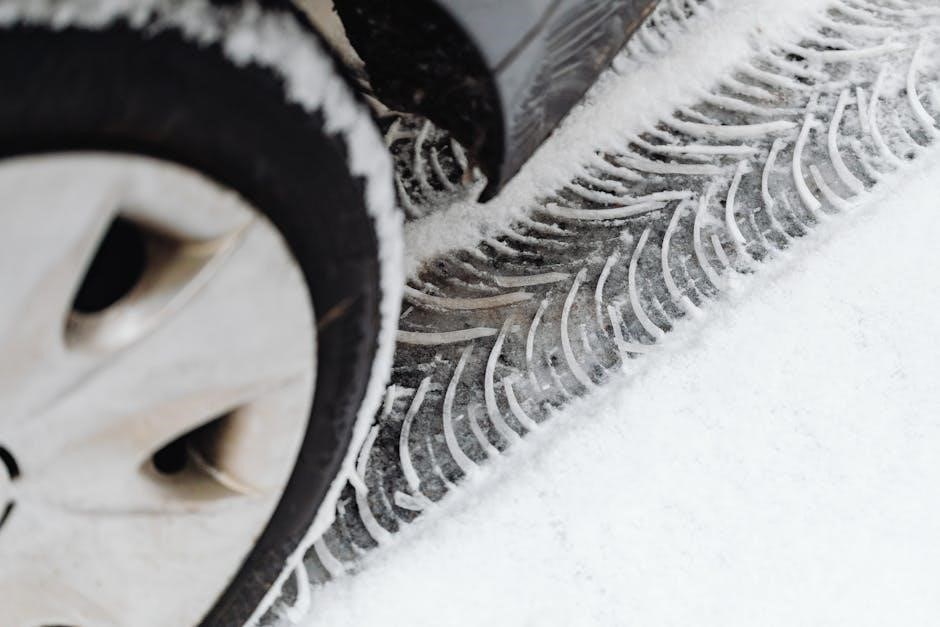Doll markings are stamps, signatures, or labels that identify a doll’s origin, manufacturer, or artist, often found on the back, bottom, or inside the head. These marks provide essential information for collectors, helping to determine the doll’s history, value, and authenticity. They may include dates, logos, or patent numbers, serving as a key tool in identification and valuation. Understanding doll markings is crucial for both collectors and historians, offering insights into craftsmanship and cultural heritage. These subtle details can elevate a doll from a simple toy to a significant historical artifact.
1.1 The Origins and Purposes of Doll Markings
Doll markings originated as early as the 18th century, serving to identify makers, patents, and origins. They were primarily used for branding, copyright protection, and quality assurance. Over time, these marks evolved to include logos, signatures, and symbols, becoming vital tools for authentication, historical research, and determining a doll’s cultural and artistic significance.
1.2 The Importance of Doll Markings in Identification and Valuation
Doll markings are crucial for identifying a doll’s maker, era, and materials, ensuring authenticity and aiding in valuation. They distinguish original pieces from reproductions, providing insights into historical context and craftsmanship. Collectors and appraisers rely on these marks to assess rarity and determine market value, making them indispensable for accurate doll appraisals and historical research.

Types of Doll Markings
Doll markings vary widely, including manufacturer logos, artist signatures, patent numbers, and country-of-origin stamps. These marks help identify the doll’s maker, era, and authenticity, aiding collectors and historians.
2.1 Manufacturer Marks and Logos
Manufacturer marks and logos are identifiers used by dollmakers to signify their brand. These marks, often stamped or printed, help trace a doll’s origin and authenticity. They may include symbols, initials, or full company names, serving as a crucial link to the doll’s history and value. Collectors rely on these marks to verify provenance.
2.2 Artist Signatures and Initials
Artist signatures and initials are unique identifiers that highlight a doll’s craftsmanship and authenticity. Often discreetly placed, these marks may be handwritten, stamped, or painted, showcasing the creator’s personal touch. They add sentimental and monetary value, distinguishing handmade or limited-edition dolls. Collectors prize these marks as they verify the doll’s artistic origin and rarity.
2.3 Patent and Copyright Marks
Patent and copyright marks are legal identifiers ensuring originality and protecting intellectual property. These marks, often numerical or coded, verify a doll’s unique design and production rights. They help determine authenticity and age, crucial for collectors and appraisers. Patented dolls are highly sought after, as they represent innovation and historical significance in toy manufacturing.
2.4 Country of Origin Marks
Country of origin marks indicate where a doll was produced, often mandated by trade laws. These marks help identify cultural influences, materials, and craftsmanship. For example, “Made in Germany” or “Japan” signifies quality and tradition. Collectors use these marks to trace a doll’s heritage, enhancing its historical and monetary value significantly.
Identifying Doll Markings
Identifying doll markings involves examining materials, techniques, and wear patterns. Marks may be stamped, painted, or etched, with aging affecting visibility. Decoding symbols and abbreviations requires research and expertise to accurately determine origin and authenticity.
3.1 Materials and Techniques Used in Creating Marks
Doll markings are created using various materials like paint, ink, or metal stamps. Techniques include stamping, hand-painting, or etching. Some marks are molded into the doll during production, while others are added later. The choice of material and method often reflects the era and manufacturer, with wear and aging affecting mark visibility over time.
3.2 The Role of Aging and Wear in Mark Identification
Aging and wear significantly impact doll mark identification. Over time, marks may fade, chip, or become worn, making them harder to decipher. Environmental factors like light exposure or handling can degrade paint or ink, while metal stamps may oxidize. Restorations can also alter or obscure original marks, complicating authentication efforts for collectors and historians alike.
3.3 Decoding Symbols and Abbreviations in Marks
Doll markings often feature symbols and abbreviations that require decoding. These can include logos, initials, or codes representing manufacturers, countries, or model numbers. Overlapping or faded marks may obscure meanings, while symbols like flags or crowns indicate origin. Reference guides and catalogs are essential for interpreting these codes, ensuring accurate identification and valuation of dolls.

Historical Significance of Doll Markings
Doll markings serve as historical records, reflecting craftsmanship, cultural values, and societal trends. They trace the evolution of dolls, linking past and present, and preserving heritage for collectors and historians.
4.1 The Evolution of Doll Markings Over Time
Doll markings have evolved significantly over time, reflecting changes in materials, techniques, and regulations. Early marks were simple, often hand-painted or engraved. As manufacturing advanced, marks became more standardized, incorporating logos, patents, and country origins. Modern marks now include digital codes and QR links, blending tradition with technology for authenticity and traceability.
4.2 Cultural and Artistic Influences on Markings
Cultural and artistic influences have shaped doll markings, reflecting regional craftsmanship and design traditions. Symbols, patterns, and signatures often mirror local art styles, while famous artists’ marks add uniqueness. These elements enhance authenticity and value, making each doll a testament to its cultural and creative heritage, blending tradition with artistic expression.
4.3 Rare and Unique Marks from Historical Dolls
Rare and unique marks on historical dolls provide insights into their craftsmanship and origins. These marks often signify the doll’s era and maker, making them invaluable for collectors and historians. Certain marks are associated with renowned manufacturers, enhancing their rarity and value, and are highly sought after for their historical significance.
Modern Uses and Trends in Doll Markings
Modern doll markings integrate technology and artistry, with unique designs and personalized engravings. AI and digital tools enhance mark creation, appealing to contemporary collectors who value authenticity and creativity.
5.1 Collectors and the Value of Markings in Modern Dolls
Collectors highly value modern doll markings for authenticity and provenance. Unique signatures and limited-edition marks increase a doll’s desirability and monetary worth. These details serve as a bridge between craftsmanship and ownership history, making marked dolls more sought after in today’s competitive market.
5.2 The Role of Markings in Contemporary Doll Artistry
Modern doll artists use markings to showcase their creativity and ensure authenticity. These marks, often intricate and personalized, reflect the artist’s unique style and craftsmanship. They serve as a signature, verifying the doll’s origin and enhancing its artistic value. Contemporary techniques blend traditional methods with innovative materials, making each mark a testament to originality.
5.3 Authentication and Appraisal Using Modern Markings
Modern doll markings are essential for authentication, ensuring a doll’s legitimacy and value. Experts use advanced techniques, such as digital databases and AI, to analyze marks, verifying their origin and craftsmanship. These tools enhance appraisal accuracy, helping collectors and appraisers determine the doll’s market value and historical significance effectively.

Challenges in Identifying and Interpreting Doll Markings
Identifying doll markings can be challenging due to wear, ambiguous symbols, and limited documentation, complicating authentication and valuation processes.
6.1 Rare and Ambiguous Marks
Rare and ambiguous marks pose significant challenges, as their scarcity or unclear design can make identification difficult. These marks may lack documentation or vary in interpretation, leading to confusion and potential misidentification. Their uniqueness can also obscure their origins, complicating efforts to trace their history or authenticate the doll effectively.
6.2 Forgeries and Reproductions
Forgeries and reproductions are a significant concern in doll collecting, as counterfeit marks can mimic authentic ones, deceiving even experienced collectors. These fake marks aim to inflate a doll’s value by falsely suggesting rarity or historical significance. Identifying such marks requires meticulous examination and verification against known authentic examples and historical records.
6.3 The Impact of Restoration on Mark Visibility
Restoration processes, such as repainting or refinishing, can inadvertently or intentionally obscure doll markings, reducing their visibility and authenticity. Over-cleaning or improper techniques may erase or damage marks, complicating identification and valuation. Collectors and appraisers must carefully inspect dolls for signs of restoration to determine the integrity of their markings and overall legitimacy.

Tips for Doll Collectors
Research extensively, use advanced search tools, and examine marks carefully. Preserve marks by avoiding harsh cleaning and store dolls in stable environments to maintain their integrity and value over time.
7.1 Research and Reference Materials for Mark Identification
Researching doll markings requires accessing libraries, online databases, and collector communities. Use specialized guides, auction catalogs, and museum resources. Employ advanced search techniques like quotation marks for exact phrases and site-specific searches to locate reliable information quickly and accurately.
7.2 Tools and Techniques for Examining Marks
Examine doll marks using magnifying glasses, loupes, or digital microscopes for clarity. Proper lighting, such as LED or UV lights, can reveal faint or hidden marks. Use cameras for documentation and comparison. Handle marks gently to avoid damage, ensuring their preservation for accurate identification and valuation.
7.3 Best Practices for Preserving and Maintaining Marks
To preserve doll marks, avoid harsh cleaning products and abrasive materials. Gently dust with soft brushes or lint-free cloths. Store dolls in stable environments, away from direct sunlight and moisture. Use archival-quality materials for storage to prevent deterioration. Handle dolls with clean, dry hands to maintain mark integrity and ensure longevity.

Case Studies and Examples
Notable dolls, like the ‘Titania’ by Kämmer & Reinhardt, feature intricate marks that reveal their origin and craftsmanship. Such examples highlight how specific marks can elevate a doll’s historical and monetary value, making them treasured collectibles for enthusiasts and historians alike.
8.1 Notable Dolls with Significant Marks
Notable dolls, like the ‘Titania’ by Kämmer & Reinhardt, feature intricate marks that reveal their origin and craftsmanship. These marks, often including dates or artist signatures, significantly enhance a doll’s value and historical significance, making them highly sought after by collectors and historians for their rarity and cultural importance.
8.2 Solving the Mystery of Unknown Marks
Solving unknown doll marks often requires advanced search strategies, like using quotation marks for exact phrases or tildes for synonyms. Excluding irrelevant terms with a minus sign and prioritizing with a plus sign can refine results. Site-specific searches and exploring patent databases or collector forums can uncover hidden clues, aiding in identification.
8.3 Success Stories in Mark Identification
Success stories in mark identification highlight how advanced search techniques and expert knowledge have uncovered rare dolls. For instance, a collector found a 19th-century bisque doll with a faint mark, later identified as a rare German manufacturer, significantly increasing its value. Such cases showcase the power of meticulous research and mark analysis.

The Future of Doll Markings
The future of doll markings lies in AI and machine learning, enhancing authentication and accessibility. Digital platforms will revolutionize how collectors identify and value marks, ensuring a vibrant collecting community for generations.
9.1 Technological Advancements in Mark Identification
AI and machine learning are transforming doll mark identification, enabling faster and more accurate analysis. Digital databases now offer real-time mark matching, reducing reliance on manual searches. These tools enhance collector efficiency, ensuring precise valuations and authentications while expanding accessibility to rare and unique marks globally.
9.2 The Role of AI and Machine Learning in Mark Analysis
AI and machine learning enhance doll mark analysis by automating pattern recognition, improving accuracy, and speeding up identification. These technologies can analyze vast databases, match marks precisely, and predict valuations, aiding collectors and experts in authenticating and valuing dolls more efficiently and effectively than traditional methods.
9.3 Emerging Trends in Doll Markings and Collecting
Emerging trends include the rise of personalized doll markings using AI-generated designs, increased focus on sustainability in materials, and digital platforms enabling collectors to share and discover rare marks globally. These innovations are reshaping how dolls are created, collected, and valued, blending tradition with modern technology for a new generation of enthusiasts.
Doll markings are vital for identification, valuation, and historical context. Collectors and historians rely on these marks to uncover a doll’s origins. For further study, explore specialized books, online forums, and museum collections. Remember, understanding doll markings requires patience and access to reliable resources to ensure accurate interpretations and authentications.
10.1 Summary of Key Points
Doll markings are essential for identifying origins, manufacturers, and artists, aiding in valuation and authentication. They include signatures, logos, patents, and country of origin marks. Techniques like aging, symbols, and materials help decode these marks. Collectors rely on research, tools, and preservation to maintain and verify marks, ensuring dolls retain their historical and cultural significance.
10.2 Recommended Resources for Further Study
For deeper exploration, consider consulting doll collector communities, specialized books, and online databases. Websites like Google Arts & Culture and museum archives offer extensive doll marking guides. Collector forums and auction catalogs provide real-world examples, while books on doll history and valuation offer comprehensive insights into rare and unique marks.
10.3 Final Thoughts on the Importance of Doll Markings
Doll markings serve as historical records, revealing a doll’s origins, craftsmanship, and cultural context. They are vital for authentication, valuation, and understanding artistic evolution. These marks bridge the past and present, offering insights into craftsmanship and cultural heritage. Their study is essential for collectors, historians, and enthusiasts, ensuring the preservation of doll-making traditions for future generations.



